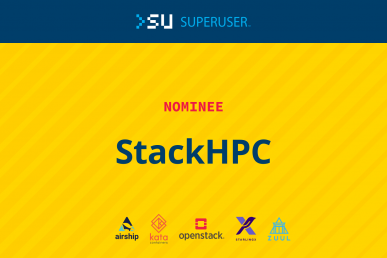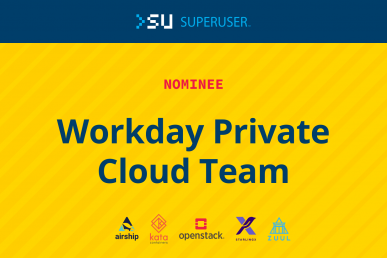It’s time for the community to help determine the winner of the 2020 Open Infrastructure Summit Superuser Awards. The Superuser Editorial Advisory Board will review the nominees and determine the finalists and overall winner after the community has had a chance to review and rate nominees.
Now, it’s your turn.
The Adobe Platform Infrastructure Team is one of eight nominees for the Superuser Awards. Review the nomination criteria below, check out the other nominees and rate them before the deadline September 28 at 11:59 p.m. Pacific Daylight Time.
Who is the nominee?
Adobe Platform Infrastructure Team
How has open infrastructure transformed the organization’s business?
At Adobe, we increasingly depend on open source software. Open source sits at the heart of our most innovative products. For example, over half the underlying code of Adobe Experience Manager comes from open source. The product’s core, and its most critical infrastructure parts, consist of open source code from Apache projects we’re active in.
Adobe IT is also in the vanguard of open source transformation. We consciously decided five years ago to transition self-managed public clouds to OpenStack to increase flexibility and scalability for thousands of engineers, to build and maintain integrated CI/CD pipelines and regression test farms. A recent upgrade to implement infrastructure as code provided a boost to DevOps culture and forced a paradigmatic shift in the infrastructure management.
How has the organization participated in or contributed to an open source project?
In May 2019, Adobe ranked 14th among the largest corporate open source contributors (per GitHub data). We make concerted efforts to free our employees to participate in open source development and streamline the approval process for employees to contribute code.
Adobe is committed to open infrastructure and has been actively involved in related communities, including OpenStack since 2013 and Kubernetes since 2019.
- Open Infrastructure user committee – former member
- OpenStack Summit: Presented at almost every summit since 2013
- OpenStack Silicon Valley
- KubeCon + CloudNativeCon
- Meetups: Hosted and presented at many local OpenStack/Kubernetes groups
- OSF White Paper: Adding Speed and Agility to Virtualized Infrastructure with OpenStack – contributor
What open source technologies does the organization use in its open infrastructure environment?
OpenStack, Kubernetes, Mesosphere, Hadoop, Kafka, and Hubble are key open source infrastructure platforms across Adobe.
On a local level, their development and production applications are built to leverage a multitude of open source technologies, including, but not limited to: Chef, Ansible, Salt, Terraform, ELK, Docker, Jenkins, Grafana, InfluxDB, Kibana, and Git.
What is the scale of your open infrastructure environment?
Adobe IT OpenStack has five clusters spread across three locations in North America and Asia. Of these clusters, three are production. Over the last five years it grew 1000% and presently hosts 13,000+ VMs on 500+ physical hypervisors. The underlying Ceph infrastructure of 3.5 PB actively serves 200,000+ IOPS on a regular basis. Besides OpenStack, our Hadoop and Kubernetes implementations grew exponentially in the last few years and now account for thousands of nodes.
What kind of operational challenges have you overcome during your experience with open infrastructure?
During our first years of OpenStack, lifecycle management was painful with large, forklift upgrades that involved high risk and costly downtime. As a result, we did not update our infrastructure frequently and couldn’t benefit from the latest open innovation. Thus, we upgraded to a Salt and Reclass based platform to implement principles of Infrastructure as Code, enabling continuous updates and automated upgrades with no downtime. Now we are able to rapidly leverage the latest innovations in open infrastructure.
How is this team innovating with open infrastructure?
With open infrastructure, Adobe IT is able to accelerate QA and testing cycles by automatically spinning up all of the various Operating systems to be tested simultaneously, reducing the time to test and push to production. Time is a great competitive advantage for Adobe’s continuing success in the marketplace. Any time we can save by handling processes and procedures more efficiently tremendously benefits both Adobe and our customers.
Each community member can rate the nominees once by September 28 at 11:59 p.m. Pacific Daylight Time.
- Demystifying Confidential Containers with a Live Kata Containers Demo - July 13, 2023
- OpenInfra Summit Vancouver Recap: 50 things You Need to Know - June 16, 2023
- Congratulations to the 2023 Superuser Awards Winner: Bloomberg - June 13, 2023

)










